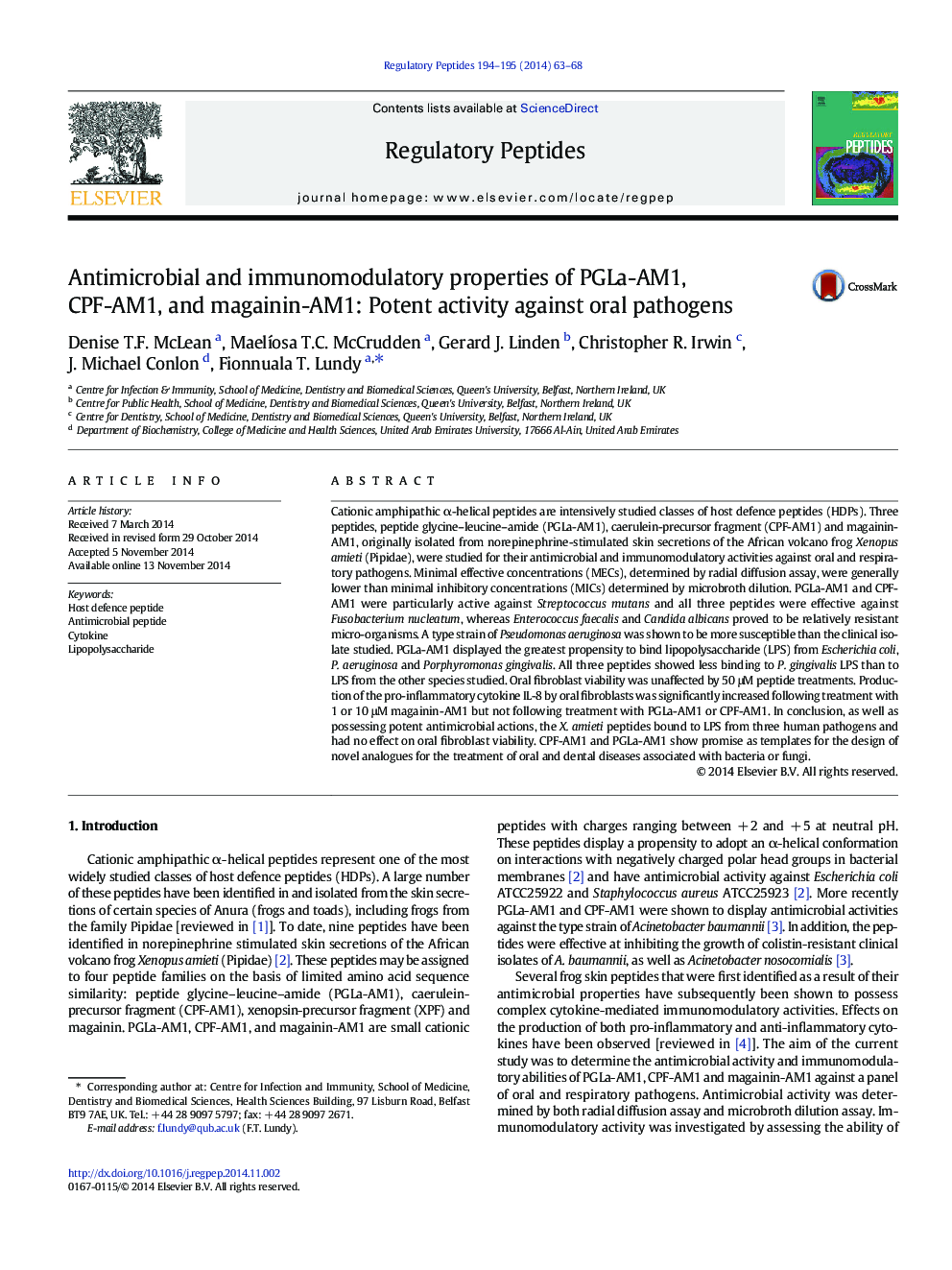| Article ID | Journal | Published Year | Pages | File Type |
|---|---|---|---|---|
| 2022375 | Regulatory Peptides | 2014 | 6 Pages |
•Xenopus amieti peptides possess potent biological activities against oral pathogens.•Oral fibroblast viability was unaffected by treatment with PGLa-AM1, CPF-AM1 or magainin-AM-1.•PGLa-AM1 displayed the greatest propensity to bind lipopolysaccharide.•Both CPF-AM1 and PGLa-AM1 show promise as templates for design of novel therapeutics.
Cationic amphipathic α-helical peptides are intensively studied classes of host defence peptides (HDPs). Three peptides, peptide glycine–leucine–amide (PGLa-AM1), caerulein-precursor fragment (CPF-AM1) and magainin-AM1, originally isolated from norepinephrine-stimulated skin secretions of the African volcano frog Xenopus amieti (Pipidae), were studied for their antimicrobial and immunomodulatory activities against oral and respiratory pathogens. Minimal effective concentrations (MECs), determined by radial diffusion assay, were generally lower than minimal inhibitory concentrations (MICs) determined by microbroth dilution. PGLa-AM1 and CPF-AM1 were particularly active against Streptococcus mutans and all three peptides were effective against Fusobacterium nucleatum, whereas Enterococcus faecalis and Candida albicans proved to be relatively resistant micro-organisms. A type strain of Pseudomonas aeruginosa was shown to be more susceptible than the clinical isolate studied. PGLa-AM1 displayed the greatest propensity to bind lipopolysaccharide (LPS) from Escherichia coli, P. aeruginosa and Porphyromonas gingivalis. All three peptides showed less binding to P. gingivalis LPS than to LPS from the other species studied. Oral fibroblast viability was unaffected by 50 μM peptide treatments. Production of the pro-inflammatory cytokine IL-8 by oral fibroblasts was significantly increased following treatment with 1 or 10 μM magainin-AM1 but not following treatment with PGLa-AM1 or CPF-AM1. In conclusion, as well as possessing potent antimicrobial actions, the X. amieti peptides bound to LPS from three human pathogens and had no effect on oral fibroblast viability. CPF-AM1 and PGLa-AM1 show promise as templates for the design of novel analogues for the treatment of oral and dental diseases associated with bacteria or fungi.
